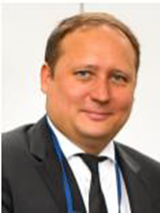DETERMINING WATER-FILLED POROSITY OF TIGHT OIL RESERVOIRS WITH A NEW INTERPRETATION METHOD FOR DIELECTRIC DISPERSION MEASUREMENTS
Downtown Houston
Speaker:
Seminar Date: Mar 10 2021
Registration Opens: Feb 25 2021 - Mar 09 2021
Time: 12:00 PM - 01:00 PM (US CDT)
Admission/Registration Link: None
Donation Link: None
Meeting/Webinar Link: https://attendee.gotowebinar.com/register/5548739718413686543
Contact: Andrew Hind (VP Downtown, SPWLA Houston Chapter)
Corresponding: vpdowntown@spwla-houston.org
Fees: FREENOTES:
Contact Javier Miranda (SPWLA Houston Chapter President)
Corresponding president@spwla-houston.org

ABSTRACT:
Tight oil reservoirs present a unique opportunity for dielectric dispersion logging. Dielectric logging is sensitive to the water content and provides water-filled porosity without having to know Archie’s empirical parameters or water salinities, as is required with resistivity log interpretation. Moreover, because of the extremely low permeability of the shale reservoirs, there is effectively no invasion of the borehole fluids into the formation. Thus, in these reservoirs, dielectric dispersion logging directly provides the water-filled porosity of the undisturbed zone. In this paper, we investigate the interpretation of the dielectric dispersion measurements in tight oil formations. A representative core collection was obtained from two intervals in a field. The core material was characterized in terms of lithology and total organic carbon (TOC) content. The cores were cleaned and saturated with brines that match the formation water salinities. Next, the dielectric dispersion measurements on cores were obtained under controlled laboratory conditions of pressure, temperature, and brine salinity. On the basis of the analysis we conducted on these data, we have developed a new method for the interpretation of multifrequency dielectric logs in tight oil reservoirs. The new method has a significant advantage over the existing approaches because it does not require an input for either matrix or hydrocarbon permittivities, including kerogen permittivity, to derive water-filled porosity as is the case with the existing approaches. The new method enables the elimination of all associated uncertainties with formation mineral models in complex lithologies, unknown mineral permittivity endpoints, and, most importantly, the poorly defined permittivity of kerogen. The new method requires only the relatively well-known input of formation temperature. Thus, the new method provides a more robust, streamlined, and consistent interpretation of the dielectric dispersion logs in tight oil and reduces the uncertainty on the estimate of hydrocarbon in place.
BIOGRAPHY:
Nikita Seleznev received his PhD in Petrophysics from the Delft University of Technology in The Netherlands. He joined Schlumberger-Doll Research in 2000 and held various positions, including Petrophysics Program Manager and Principal Scientist. During his tenure, Nikita conducted research and led R&D projects on various aspects of petrophysics, including nuclear spectroscopy, petrophysical evaluation systems, and dielectric as well as resistivity logging tools and techniques. Additionally, he studied applications of the induced polarization measurements for formation evaluation and a joint interpretation of the electromagnetic measurements across a wide frequency band. He has published more than 30 papers and holds 9 US patents. Nikita served as an SPWLA Technology Committee member from 2017-2019.
